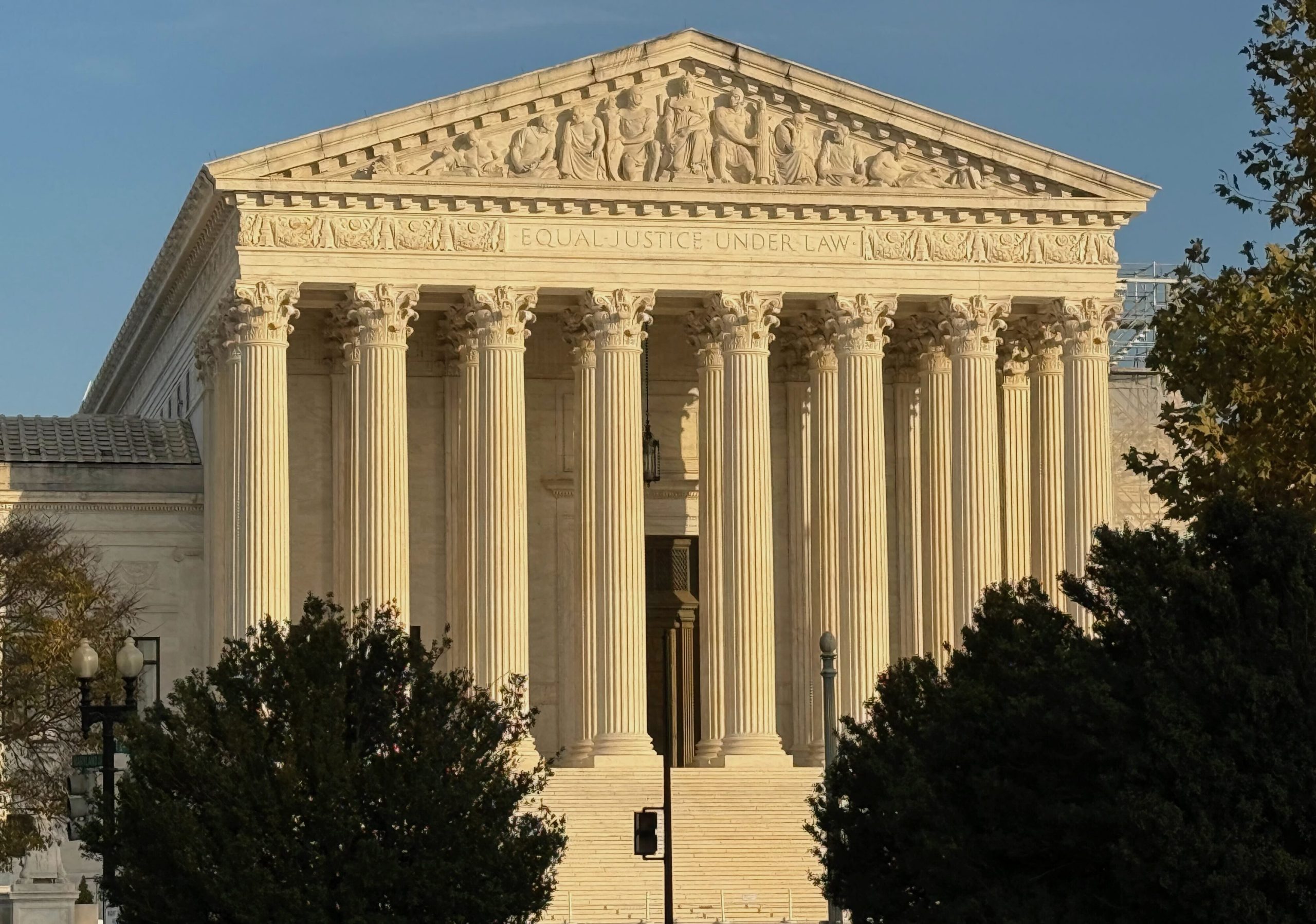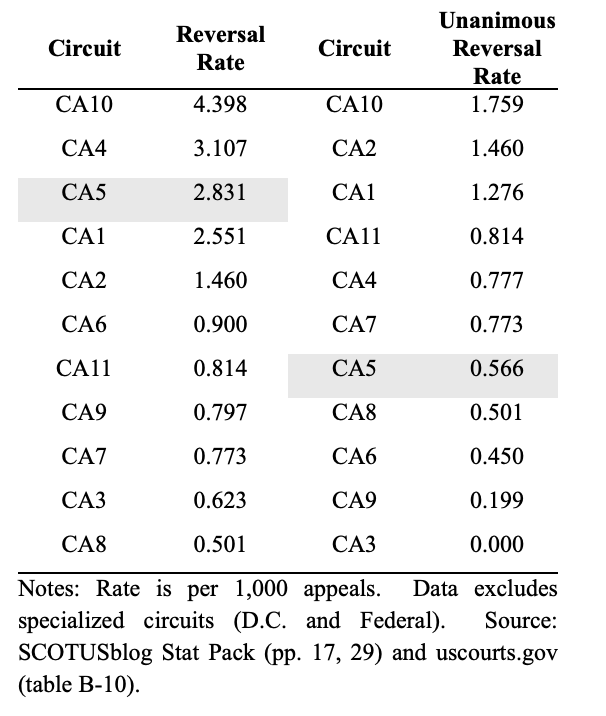Is the 5th Circuit too extreme for the Supreme Court yet?


AV Ristorante is a recurring series by Brian Fitzpatrick.
Please note that the views of outside contributors do not reflect the official opinions of SCOTUSblog or its staff.
For the last several years, critics have contended that the U.S. Court of Appeals for the 5th Circuit has become a conservative pariah. It’s been accused of “dismantling democracy” and “spearheading a judicial power grab.” “It is even too conservative for the conservative Supreme Court!,” commentators say.
Yes, the 5th Circuit has some colorfully conservative judges. But I have been skeptical of the claims that it has become the right-wing equivalent of the old U.S. Court of Appeals for the 9th Circuit, which for many years was the most liberal and most frequently reversed circuit court in the country.
Once, when I testified before the Senate Judiciary Committee on splitting the 9th Circuit into smaller circuits, Sen. Ted Cruz and I joked about creating a “control-N” macro during our clerkship days to quickly insert “reverse” in draft Supreme Court opinions reviewing cases from the 9th. Do clerks these days have a “control-F” macro for the 5th Circuit? I doubt it.
The case against the 5th Circuit usually starts with its win-loss record at the court. Critics point out it is reversed more often than it is affirmed, sometimes much more often than it is affirmed. But, as I noted in my Senate testimony, win-loss record is a poor measure of a circuit’s performance.
Sometimes the Supreme Court takes cases to correct errors, but sometimes it takes cases to settle circuit splits. This makes it hard to know what a reversal means.
Moreover, the Supreme Court reviews very few cases from each circuit every term; losing a couple of coin flips on the circuit-split docket can overwhelm a win-loss record.
Finally, a circuit’s win-loss record ignores that some circuits like the 5th decide many more appeals than other circuits. This obviously gives the Supreme Court many more chances to reverse it than other circuits.
If we are going to try to use the 5th Circuit’s Supreme Court record to understand whether it is the conservative bête noire that its critics claim it to be, we must at the very least control for the number of appeals a circuit decides. That is, if we are going to put the number of Supreme Court reversals in the numerator, the denominator should not be the number of cases the Supreme Court heard from the 5th Circuit during the 2024-25 term, but how many appeals the 5th Circuit decided the previous year. But even better would be to look at the number of unanimous Supreme Court reversals in the numerator – that’s a real measure of bête noire behavior.
As I have shown in the past, the 5th Circuit’s reversal rates using these metrics have been decidedly ordinary. Did anything change during the 2024-25 term? No.
The table below shows the number of Supreme Court reversals and unanimous reversals for each circuit during the 2024-25 term for every 1,000 appeals the circuit decided after oral argument or submissions on the briefs (the cases most eligible for Supreme Court review) in the preceding year.
As the table shows, the biggest loser during the 2024-25 term was the U.S. Court of Appeals for the 10th Circuit, not the 5th Circuit. And on the most important metric – unanimous reversals – the 5th Circuit was right in the middle of the pack.

Perhaps the most that can be said is that the 5th Circuit is not quite the star performer it used to be. When I testified in the Senate, I gathered 20 years of this data, from 1995 to 2015, and, over that span, the 5th Circuit was the least reversed circuit of them all. Yes, it’s moved up on the chart since then, but, contrary to the popular narrative, it still doesn’t deserve its own macro.
Posted in AV Ristorante, Recurring Columns